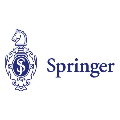In this paper, the problem of enhancing the quality of virtual reality (VR) services is studied for an indoor terahertz (THz)/visible light communication (VLC) wireless network. In the studied model, small base stations (SBSs) transmit high-quality VR images to VR users over THz bands and light-emitting diodes (LEDs) provide accurate indoor positioning services for them using VLC. Here, VR users move in real time and their movement patterns change over time according to their applications. Both THz and VLC links can be blocked by the bodies of VR users. To control the energy consumption of the studied THz/VLC wireless VR network, VLC access points (VAPs) must be selectively turned on so as to ensure accurate and extensive positioning for VR users. Based on the user positions, each SBS must generate corresponding VR images and establish THz links without body blockage to transmit the VR content. The problem is formulated as an optimization problem whose goal is to maximize the average number of successfully served VR users by selecting the appropriate VAPs to be turned on and controlling the user association with SBSs. To solve this problem, a meta policy gradient (MPG) algorithm that enables the trained policy to quickly adapt to new user movement patterns is proposed. In order to solve the problem for VR scenarios with a large number of users, a dual method based MPG algorithm (D-MPG) with a low complexity is proposed. Simulation results demonstrate that, compared to a baseline trust region policy optimization algorithm (TRPO), the proposed MPG and D-MPG algorithms yield up to 38.2% and 33.8% improvement in the average number of successfully served users as well as 75% and 87.5% gains in the convergence speed, respectively.
翻译:在本文中,对提高虚拟现实(VR)服务质量的问题进行了研究,研究的是一个室内变异器(Thz)/可见光光通信(VLC)无线网络。在研究的模型中,小型基站(SBS)通过Thz波段和发光二极管(LED)向VR用户传输高质量的VR图像,为他们提供使用VLC的准确的室内定位服务。在这里,VR用户实时移动,其移动模式随时间变化。VR用户的机体可以阻断Thz和VLC的链接。要控制所研究的Thz/VLC无线VR网络的能源消耗,必须有选择地基站点(SBC无线无线),VLC访问点(VLCS)的精度(SAP)将快速的精度递增速度(DLVA),使这个系统用户的精度(DLPO)的精度(DLVMA) 快速转换成新的系统。根据用户的精度排序,将SBS-G的精度调整数据。





